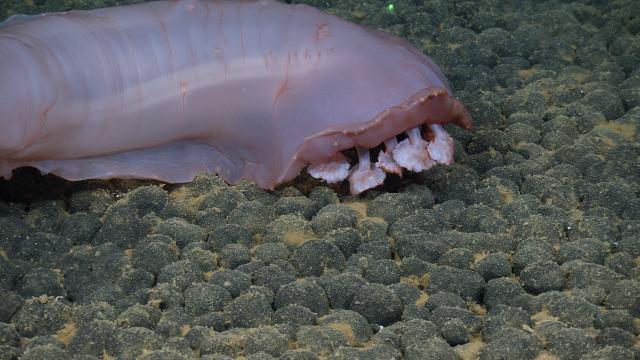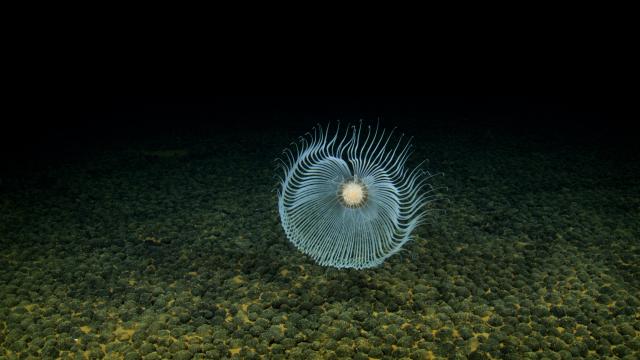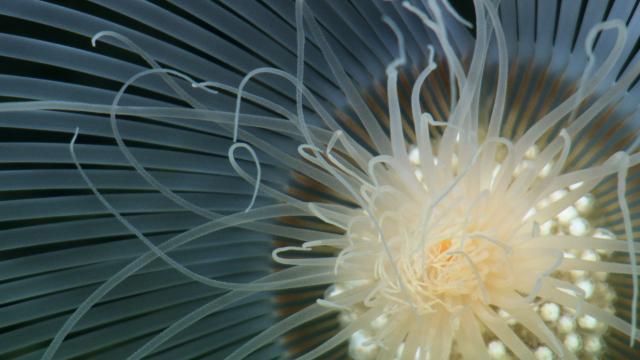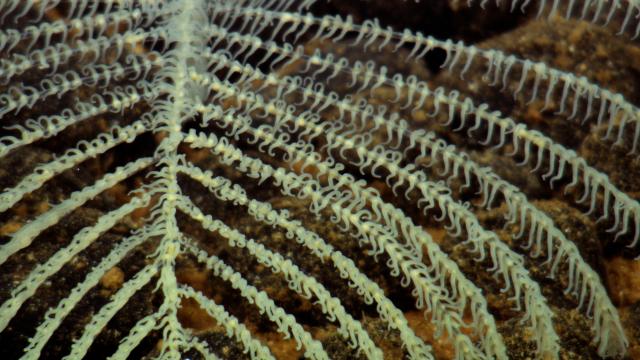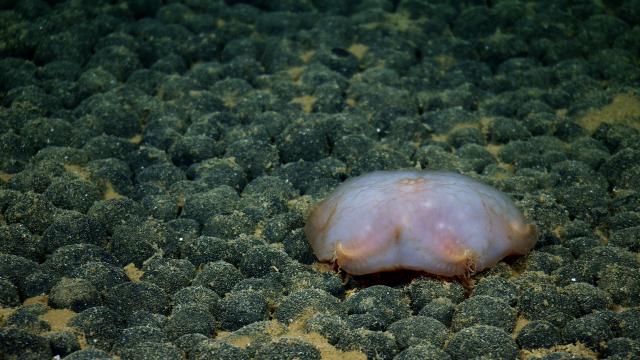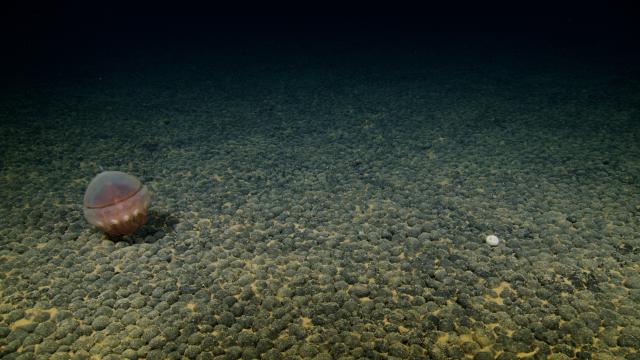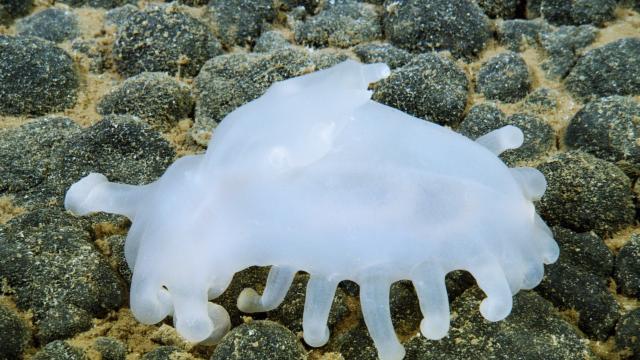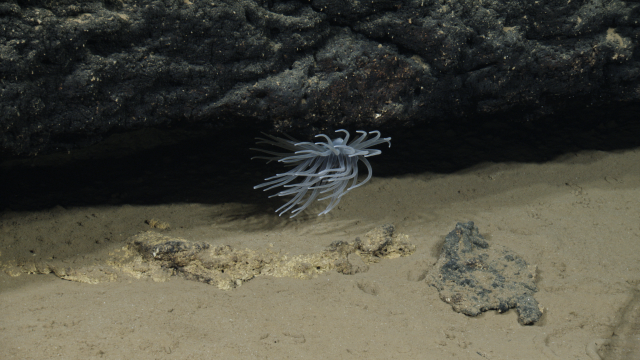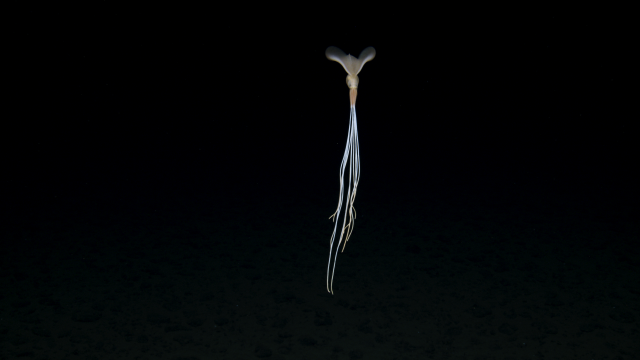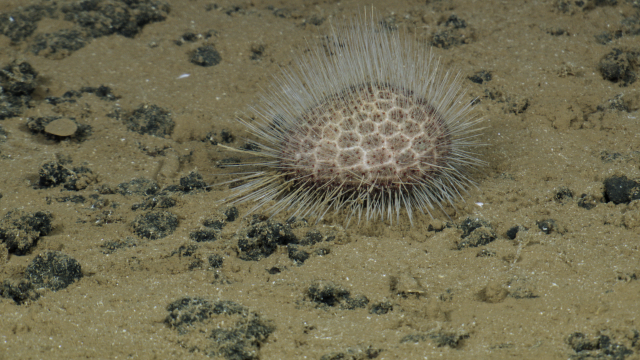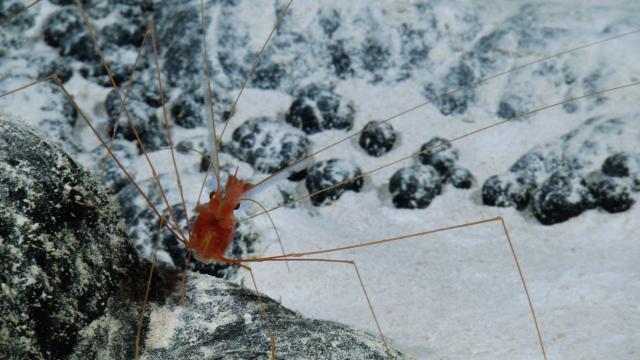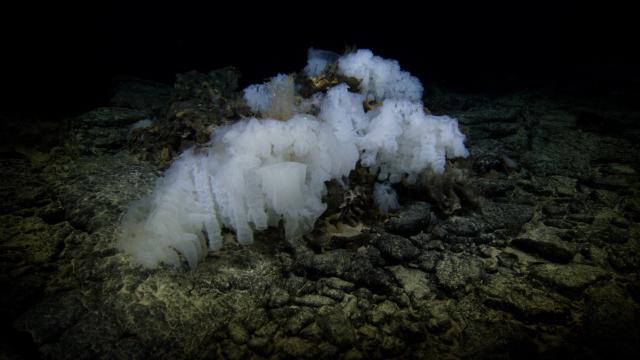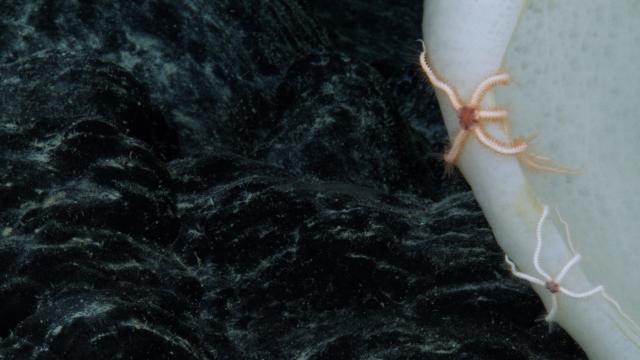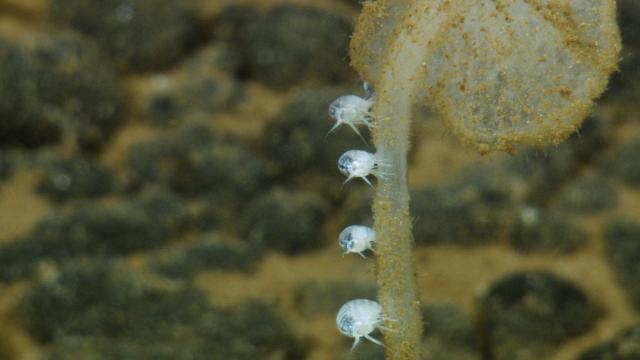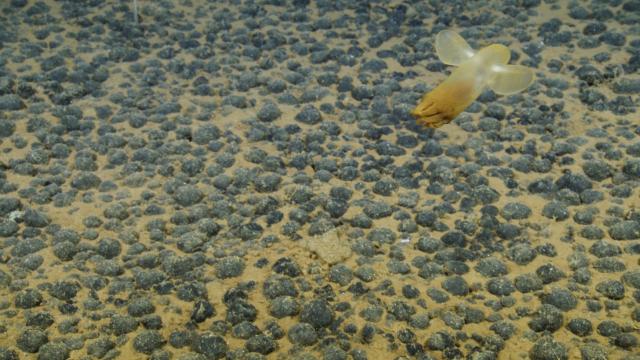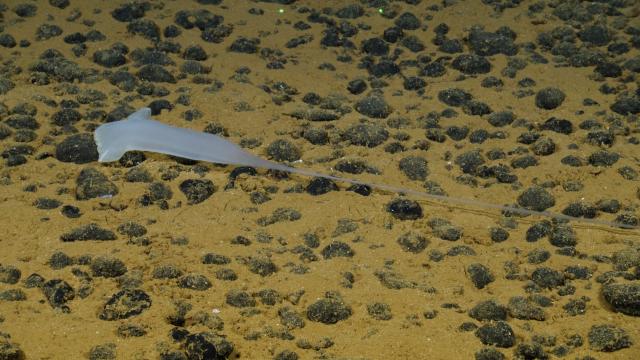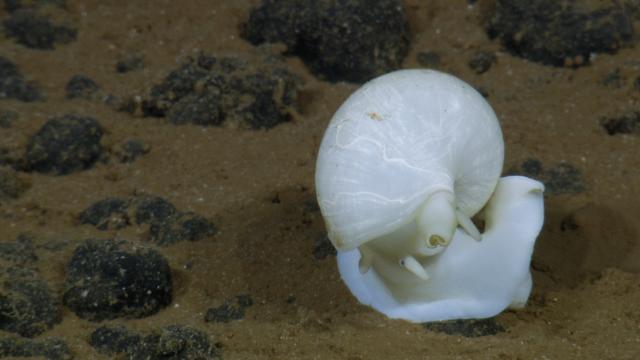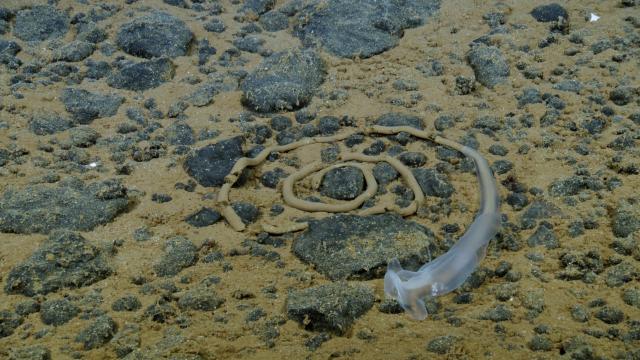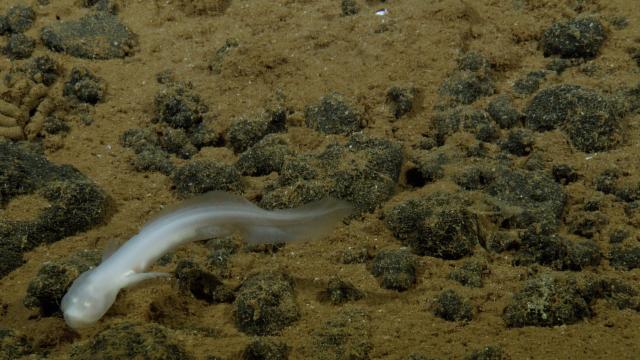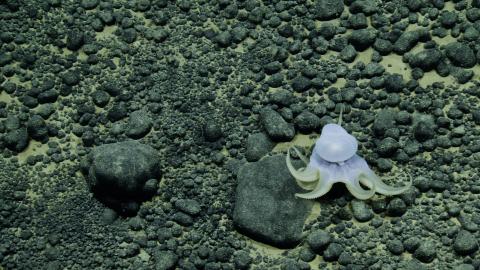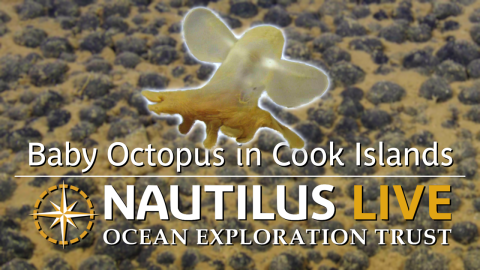Life in the Cook Islands’ Deep Sea
High pressure, cold waters, and complete darkness make for some resilient, unique-looking organisms of all shapes and sizes.
During the NA176 expedition in the Cook Islands, we completed seven ROV dives and spent over 148 hours on the seafloor. With the collaborative effort of our teams of engineers, scientists, onshore scientists, videographers, educators, and mariners who keep E/V Nautilus exploring around the clock, we were able to gain new visual documentation of deep-sea megafauna in the South Pacific Ocean. Because the expedition explored deep-sea environments where past scientific surveys were scarce or inadequate, much of what we saw was a surprise.
When noticing these deep-sea organisms and thinking about how they may have evolved to look as they do today, it is important to consider the conditions in which they survive. At 5,000 meters in depth, there is approximately 500 atmospheres (atm) of pressure, the equivalent of 50 elephants standing on you! For most of the global seafloor, the temperature is 1 degree Celsius, so nearly freezing, and there is rarely any sunlight that penetrates more than 200 meters. So not only is it completely dark, but it is also cold and under intense pressure. Not to mention, there is very little food. Many of the largest animals feed from the marine snow that drifts in the currents or lies on the seafloor around them. Marine snow is organic material (like dead algae, feces, discarded mucus, or skin cells) that sinks down from shallower waters. You may call these “bottom feeders” if they eat the snow off the ground or “suspension feeders” if they ingest it directly from the floating shower. Please enjoy these sightings, we surely did!
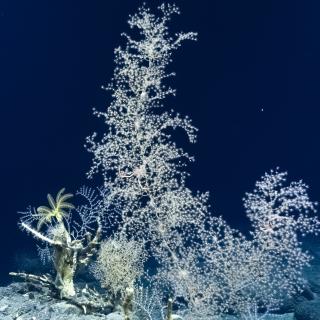
Deep-Sea Habitats of the Cook Islands
This 21-day expedition will utilize the ROV, mapping, and telepresence systems of E/V Nautilus to explore previously unsurveyed deep-sea priority areas identified by the management and science community in the Cook Islands.
